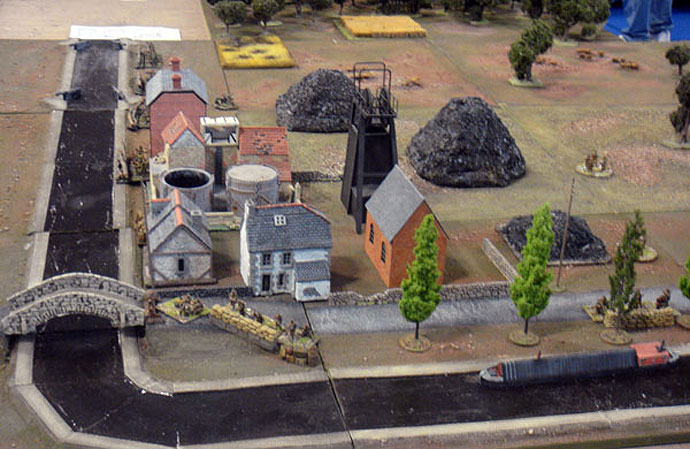24th August – The Battle of Mons
By daybreak troops from the 3rd Division were trickling back through the Dorsets’ lines. The Battalion HQ had received orders at 2am that they were to fall back south to Pâturages once they were relieved by a 13th Brigade unit. This started with the Duke of Wellington’s who relived D Company at 6am, followed by some of C Company.
The rest, Company B and remnants of A and C stayed put and fought. My guess is that in the confusion it was impossible to know who was passing through them and that their duty, as rearguard, remained to stand and fight. By 11:30am Captain Williams wrote to HQ that “I am being gradually driven in, and my ammunition is almost exhausted”.
But HQ had already left the railway bridge at Wasmes for Pâturages, along with transport and the machine gun section at 8am. They sent Company A to reinforce the Bedfords. The Dorsets were now fighting a rearguard action.
At 10:30am the battalion’s transport ran into a mass of German soldiers who had worked their way round to the rear of the 15th Brigade. Lieutenant Cecil Francis Mowbray Margetts, transport officer and all round hard man, saved the situation from certain disaster by riding into the enemy firing his revolver. Gleichen sees Margetts riding past “streaming with blood from the shoulder.” He was left in the house of a local doctor and later taken prisoner. He was awarded the D.S.O. on the 5th December, the first of the Dorsets to do so, and survived the war, dying at the grand old age of 92 in 1976.
By 2pm the situation had become untenable for the rest of the Dorsets and, having exhausted ammunition and, with the Germans pressing their left and right flanks, they “ran for their lives”. Their bravery, and refusal to withdraw throughout the morning, had meant that the rest of the brigade in reserve had got away in fairly good order. They retired to Blaugies pretty much unbothered by the enemy, who had been dealt a very hard blow by the BEF.
Just as they were cooking up some food, exhausted from the fighting and extreme heat, the Dorsets received orders to march across the border to St. Waast in France, where the remnants of the 5th Division were reforming. They arrived there along with the remnants of the 15th Brigade – the Cheshires and Norfolks had had a particularly rough time defending the left hand flank of the 5th Division. The 1st Bn Cheshires was pretty much decimated after a desperate cavalry charge failed to drive off the German attack.
The Dorsets, themselves, had suffered their first casualties: 12 killed, 49 wounded and 69 men missing. Although it’s interesting to note that running a query on the Commonwealth War Graves Commission website lists 20 men from the Dorsetshire Regiment having died on the 23rd August 1914. 12 of those are commemorated at La Ferte-Sous-Jouarre. 6 at Hautrage Military Cemetery, 1 at Houdain-Les-Bavay Communal Cemetery and 1 at Troisvilles Communal Cemetery.
Four officers were missing including Lieutenant Margetts and Captain Hyslop whom we met yesterday. He was “severely wounded” at 10:30am. I dug around and, happily, he survived the war (his full name was Robert George Bingham Maxwell-Hyslop). He became an official historian of The Great War and co-wrote Volume V: 26 September – 11 November: The Advance to Victory in 1947. If you’re feeling rich and going on a 3 month cruise, or serving at Her Majesty’s pleasure, then you can buy the Official History of The Great War (France and Belgium) on a DVD.
The other officer who was injured was Lieutenant Walter Algenon Leishman. Like Margetts, he must have been taken prisoner and, sadly, only survived the war by 3 months, dying on 19 Feb 1919. You can tell he was a POW as he has Exonerated Officers List written on his medal card.
The day’s fighting is really hard to visualise. I’ve tried my best to show the Dorsets’ progress throughout the 24th August but it is, at best, an approximation. The day’s action is best summed up by Lt-Col Ransome. “Confused fighting, complicated by uncertainty as regards the flanks, lack of training in street fighting, and embarrassment over the crowds of civilians thronging through the streets.” The 5th Division had done exactly what had been asked of it. It had fought over an overextended line in impossible terrain but it had held the Germans off for long enough to prevent them completely encircling the BEF and the French Fifth Army.
